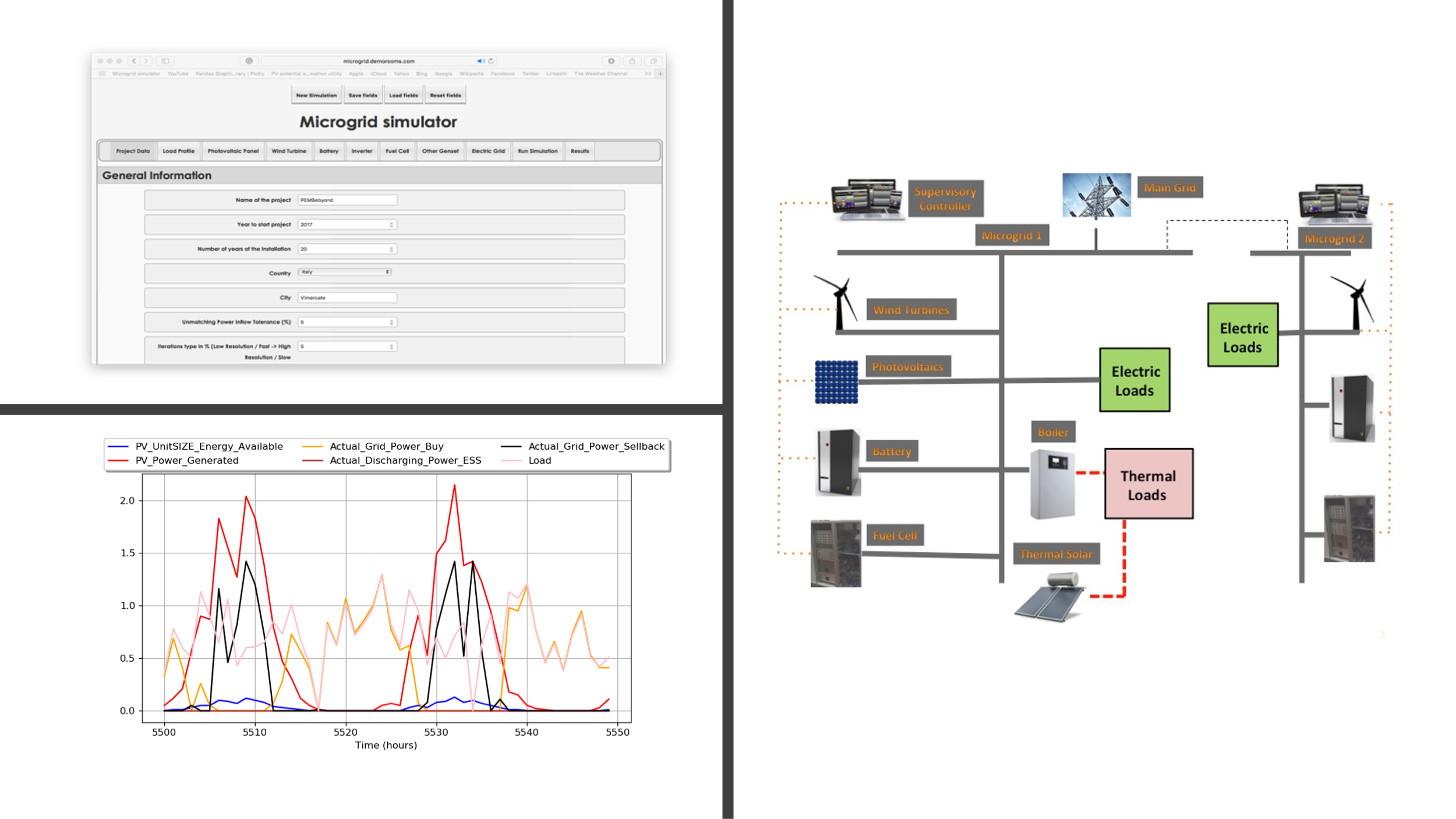GenOPT
AI-based tool for multi-microgrid optimizations
Global warming and growth of energy demand requires quick and effective actions to reduce environmental emission. Renewable energy sources such as photovoltaic systems and wind turbines play an important role in sustainable low-carbon energy transition. Unfortunately these distributed energy resources are highly intermittent and uncertain. Thus, renewable energy sources need to be combined with energy storage and generators to instantaneously match the users demand.
Microgrids are a powerful approach to integrate Distributed Energy Resources (DER).
A microgrid is a small electric power system incorporates generation, transmission, and distribution as a whole; being capable of autonomous control, protection and management, a microgrid achieves power balance and optimal energy allocation over a given area in an islanded mode (off-grid), interconnected with other microgrids or in parallel with the main grid (grid-tie).
The design and management of a microgrid has to accomplish several challenging targets such as minimum cost of energy, highest power quality. These requirements have a great implication in the overall layout. However, finding the best-fit among a large number of combinations of resources requires computational code, solving energy balance equations in a very short time.
GenOPT is a novel computer-based tool suitable for optimizing the design and operation of multiple interconnected microgrid incorporating heating and electrical distributed energy resources. GenOPT enables the search of the best location in gridded area of small energy system connected with macrogrids.
This optimizator is based on a combination of a multi-objective evolutionary algorithm with sequential least squares linear programming method. The tool aims to support policy maker, engineers during the design phase of complex combined heat and power microgrids.
The simulation tool provides a quick and precise answer to relevant issues. In the upper level, the novel self-adaptive evolutionary algorithm searches the best financial performances (L_COE, IRR, NPV) among different configurations and locations.
At lower laver, a cost function based on a combination of analytical and machine learning techno-economic models optimizes for the energy balance.
Additionally, GenOPT performs sensitive analysis of energy demand services, prices policies.
GenOPT analyzes all the possible combinations of heat and thermal distributed energy resources with loads profiles and it returns the best-fit design, optimal operation and geographical locations of complex energy systems based on desired price policies and demand services.
Hence, the microgrid simulator is a powerful engineering, financial tool to investigate the best approaches for an effective and wide diffusion of renewable energy sources at the most convenient economic terms.
The microgrid simulator tool is the result of a research project started four years ago within Pembeyond, a funded by the European Commission funded project Pembeyond and is prosecuted as a joint research project at Laboratory of Process Systems Engineering of Bremen University.
Key Features
- Advanced web-based tool for designed configuration and cost analysis of complex micro-grids.
- Based on geo-location, the simulator calculates the irradiation, the temperature, the relative humidity and considering the lifetime of the installation, discount rate, energy sales price, electric load profile, availability of electricity from the grid
- All possible system configuration, their energy flows, RES generation profile energy storage and any further energy flow generated by a fuel cell or traditional generators are considered.
- The state of health of the various components maintenance and replacement cost, operating costs and finally the L-COE, the IRR and NPV of the installation are calculated.





